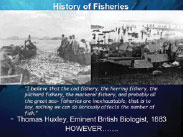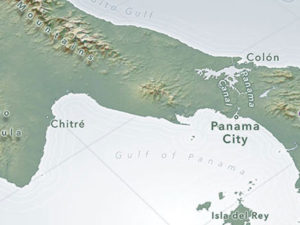
Prof. Hans-Peter Plag, PhD
Mitigation and Adaptation Research Institute
Old Dominion University
Norfolk, Va.
www.mari.odu.edu
In earlier columns, I made reference to a new definition for sustainable development: a development that meets our needs while safeguarding the Earth’s life support system on which we and all future generations depend. Safeguarding our life support system (LSS) seems logical and to be something we all should be eager and able to agree upon.
Andrew Revkin commented in a recent blog on the fact that humans did connect around the recent rare eclipse of the moon but not around our rare Earth,1 and in another blog he cites Heriberto Cabezas, who said, “We don’t have a cultural narrative that says managing our planet in a way that allows us to live on it as long as we can is probably the most important thing.”2 Why do we not have this “cultural narrative”? Why are we actually degrading the LSS with increasing speed? What is wrong with us?
We are embedded in the LSS, and as outlined earlier, the way we are embedded is determined by our economy.3 Very recently, we have become the dominating species on the planet that determines the state and trends in the LSS, not just for us, but also for large parts of the biosphere. Thus, we are an integral part of the LSS. This comes with opportunities, responsibilities, and challenges.
I am embarrassed by the poor job we are doing in safeguarding the LSS. What do I mean when I speak of LSS degradation? I tend to consider comprehensive and rapid changes in the LSS as degradation because they create lasting disequilibrium and move us away from the homeostasis that is so beneficial for the biosphere, including humanity.
As illustrated in my last column,4 particularly during the Holocene, changes in the LSS were very small and the exceptionally stable epoch provided the “safe operating space” for civilizations to emerge. However, the Post-Holocene that started about 100 to 200 years ago has been a single degrading event. It is difficult to find parallels in Earth’s long history for the magnitude of the changes in the Post-Holocene without pointing to periods of large and long-lasting volcanic eruptions or impacts of large asteroids.
I am searching for a telling analogue to what humanity is doing to the LSS. What if we look at Earth as Gaia: a huge organism-like system with physiological processes keeping the system in a dynamic equilibrium, a homeostasis? What would humanity be in this system? Flying in an airplane high above the surface, it appears as if humanity is a malignant skin cancer of Gaia. (See Figure 1.) Starting from a few centers, humanity slowly spread over Gaia’s surface initially transforming minor parts in an organic way.

FIGURE 1.
Seen from an airplane, the rapidly growing sprawling urban areas and open pit mines can be compared to malignant skin cancer. Aerial photo near Newark, New Jersey, courtesy of author.
The cancer turned malignant with the advent of the North Atlantic culture, and viral when seemingly infinite energy became easily accessible in the form of oil.5 With this, highly virulent centers soon extended their links all over Gaia’s skin and formed metastasis in America, Australia, Africa, and Asia. Today, highly active centers of mutations are all over Gaia, eventually leading to the destruction of the original skin. Characteristic of a malignant cancer, the metastasis and associated destruction are spreading at an increasing speed. As of today, more than 50% of the ice-free land surface has been transformed, and much of the original surface cover has disappeared: forests, grasslands, swamps have mutated first into cities and then into sprawling urban regions filled with monotonous residential boxes. Highways have replaced animal tracks and human trails; plains have turned into airports that link the malignant virulent centers across the continents and the oceans; agricultural land with extreme abundances for a few species has replaced ecosystems with high biodiversity; invasive species are supporting humanity in the transformation of Gaia’s skin to a malfunctioning dying layer; and mine pits and landfills are the bleeding
cancerous cracks.
“Earth observations have documented a worrying picture of expanding desertification, degradation in land cover, pollution, coastal inundation, and more extreme weather events. Since we are an integral part of the LSS, social unrest impacts the LSS and so do inequality, poverty, and overpopulation.”
The latest stepping up of the cancerous process is fracking. Modified physiological processes have changed the quality and quantity in the water cycle, altered the chemistry of the atmosphere, reduced the extent and functioning of ecosystems, and fundamentally diminished the richness and diversity of the biosphere. The originally rich forms of Gaia’s skin types and the diversity of organisms in the thin layer inhabited by living organisms increasingly make room for the monotony of a few generic types (deserts, urban areas, industrial wasteland, agricultural wilderness) and an ever lesser number of species, with one species taking over: Homo sapiens, or, more correctly, homo urbanis.6 Today we have 19 cities with more than 20 million inhabitants7 and more than half of us are living in cities or urban centers. In 2050, more than 2/3 of us will be living in urban regions increasingly further away from rural areas and even moreso from Gaia’s healthy skin. Thus, we are close to at least one vision of “Silent Green”: Many humans who will never see a natural stream running through a healthy forest; never smell the many scents of spring in an unspoiled countryside, and never breathe the clean and fresh air in a natural environment.
The outrageous scale of humanity’s action was made clear by Reinhard Goethert, who stated, “The urban population in the developing world will double by 2030. The implications are staggering. One is that we have 20 years to build as much urban housing as was built in the past 6,000.”8 Is there anything else that is focused that much on growth than cancer? More and more of us are living in areas where environmental and social stress is life-threatening. The impacts of the LSS degradation are not homogeneously distributed. Access to clean drinking water, for example, is still secure in many regions but increasingly a problem in other regions. Earth observations have documented a worrying picture of expanding desertification, degradation in land cover, pollution, coastal inundation, and more extreme weather events. Since we are an integral part of the LSS, social unrest impacts the LSS and so do inequality, poverty, and overpopulation.
As a result of the spatial variability in LSS degradation, a lifeboat mentality is developing: more and more people live under circumstances that are life-threatening and their goal is to migrate to the lifeboats. What characterizes the lifeboats? They are areas that likely will continue to provide access to clean water, have bearable temperatures and limited extreme weather events, have social stability and promise economic prosperity. This points to the central and northern part of Europe, the northern part of the U.S. and Canada, and some higher latitude parts of Asia and South America. Having said this, it is very likely that the current migration into Europe is just the beginning of a major relocation of human population on the planet. As is often the case for ships, space in the planetary lifeboats is limited and not all can get in. As a consequence, the LSS in many regions will continue to degrade and push more people to run for the lifeboats.
In his book, “Plan B 4.0 – Mobilizing to Save Civilization”,9 Lester R. Brown rewords an often repeated (but not fully applied) Einstein quote and writes, “The thinking that brought us into this mess is not likely to get us out.” But do we know what in our thinking is flawed and brought us into the mess? Only with this knowledge will we be able to stop the malignant growth process and slowly restore our LSS to a healthy state. This brings us to the most important question of our time: Why did humanity develop into the lethal cancer, killing Gaia?
The core of the problem is – as always – our view of the world and what we consider “immuta- ble truths.” At any point in time, human communities have a set of paradigms or “immutable truths” that provide a basis for us being on this planet that we call home and for the way we organize our societies, do business, and justify our actions.
In one of my earlier columns, I mentioned a presentation by James Balog,10 in which he
commented on an immutable truth that postulates that humans are too few and our actions too minor to really impact the environment, the climate, and the planet. He was convinced that this immutable truth would experience what many others have experienced: they became outdated and humanity moved on and adopted new immutable truths.
He gave three examples of immutable truths that were overcome in the last 150 years:
slavery is necessary; child work is acceptable; and women should not vote. Progress towards a more just, a more humane society depended on overcoming these truths. Our ability to address the global unsustainability of a rapidly degrading LSS hinges on realizing the underlying “immutable truths” and making an attempt to overcome these.
This brings us to the question of, what are the immutable truths and paradigms of today that keep us from putting the safeguarding of the LSS first? Going back to the analogue of skin cancer, the paradigm that economy needs growth to thrive emerges as a prime theory. For many, the necessity of growth is an immutable truth, and it blocks us from even thinking about solutions that are not growth-focused. Before I explore this thought more, let us look at a few other “immutable truths.” Some of them have been overcome in the last few decades, and others are still repeated again and again.
“IMMUTABLE TRUTHS?”
IT1: THE OCEANS ARE INVINCIBLE
This was a truth widely accepted up to about 1950. A nice example of this is the statement
by Thomas Huxley, an Eminent British Biologist, who expressed his belief in the invincible nature of the oceans in 1883. (See Figure 2.)

FIGURE 2.
The once believed “immu- table truth” of a basically infinite ocean has proven to be wrong. Courtesy of Kent Carpenter
However, by now we have evidence that defying the finite nature of the oceans is a consequential mistake.11 Most recently, an estimate published by the World Wildlife Fund claims that in the last 40 years, humanity reduced the number of fish in the oceans by half.12 Although this estimate comes with large uncertainties, it is certain that humanity has impacted the oceans not only in terms of number of fish but also in reduced biodiversity, modified ecosystems, and changed chemistry. Acidification is one of the recognized threats of climate change, and even a large-scale change in ocean circulation as a consequence of global warming can no longer be excluded.13
IT2: PROSTITUTION HAS ALWAYS EXISTED, AND WILL ALWAYS EXIST
We have heard this many times and some men cannot repeat it often enough. Many attempts in different countries to ease the burden on those who suffer (the women and children impacted) have not really reduced prostitution or made it more acceptable. However, Sweden made huge progress by abandoning the immutable truth and redefining prostitution as violence of men against women and children. This led to the logical consequence of legalizing the selling of sex (and thus protect the victims) and criminalizing the buying of sex (and thus marking the Johns as the villains). After some initial delays caused by a lack of enforcement, the new way of looking at prostitution brought it rapidly down to almost zero.14 Naming things for what they are can facilitate huge progress.
IT3: SEA LEVEL CHANGES VERY SLOWLY AND COASTLINES DON’T MOVE MUCH
This is a truth derived from 6,000 years of exceptionally stable sea level. Based on the normalcy bias created by such a long experience, many still cannot wrap their minds around the mere possibility that this no longer is true. However, scientists are worried about rapid melting of parts of the ice sheets,15 and we urgently need to drop this paradigm if we do not want to put civilization at risk along urban coastlines.16
IT4: ECONOMY NEEDS GROWTH TO THRIVE
This is an immutable truth created by economists serving those who benefit from growth. Growth is necessary for those who want more than others have. Growth propels inequality. Those who benefit from inequality are the ones who maintain this immutable truth. Andrew
Revkin asked whether the wealthy 1 Billion need new goals.2 I would say,they need to overcome the growth addiction. Unlimited growth is incompatible with sustainability. This is the single most important issue we need to address. There are many examples of societies that were stable over long periods without unsustainable growth. The cultural narrative we need is how we can overcome the current growth addiction.
THOUGHTS FOR THE FUTURE
Growth that degrades the LSS is not sustainable. Currently we have an economy that is based on the principle of satisfying our needs no matter what, while giving individuals the chance to get super rich. If we declare an economic activity that degrades and endangers the LSS as a crime against humanity, we would have to refocus the economy.
In a blog, Benjamin Neimark stated, “Nature can’t pay its own way – so let’s take the market out of conservation”.17 This thinking is flawed. Instead of taking the market out of conservation, we need to bring conservation into the market. This is comparable to the prostitution case, where Sweden found a solution by protecting the victims. Similarly, if we criminalize the selling of products produced by degrading the LSS, we suddenly protect the victim, that is, the LSS and all those who depend on it (including all of us).
Nicholas Kristof used the example of a pharmaceutical company to discuss the problem of
an economy in which crime pays.18 He could have used the oil industry. For example, Exxon spent $30 Million to discredit the science on the climate change caused by the products Exxon sells.19 True, not all companies are doing business that is criminal according to existing laws-in fact many of them want to do good for humanity and provide products that do not damage our LSS. But the system does not reward them. Crime pays in the current system.
The United Nations just accepted the proposed 17 Sustainable Development Goals (SDGs).16 Unfortunately, the SDGs are focused almost exclusively on those suffering from the unsustainability of our growth-addicted world and do not address the reasons for this suffering thoroughly. In particular, the goal of safeguarding the LSS on which we and future generations depend did not enter into the SDGs in any explicit form. There is no goal for those who are at the top financially that would create a new mindset urgently needed to bring us out of the mess created by the current mindset of more growth.
When will the three spirits that transformed Ebenezer Scrooge from a greedy business man into a valuable member of society start to visit those making in companies for-profit decisions that constitute a crime against humanity, degrade the LSS, harm most and kill many? Or is us waiting for these spirits futile?
Endnotes:
1. Revkin, A. C., 2015. “Humans Connect Around Rare Eclipse of the Moon, but Not Our Rare
Earth?” DotEarth blogs of the New York Times, published on September 29, 2015, See http:// dotearth.blogs.nytimes.com/2015/09/29/humans-connect-around-rare-lunar-eclipse-but-not-our- rare-earth.
2. Revkin,A.C.,2015.“ADayforanEcology-MindedPopeandSustainableDevelopmentGoals.” DotEarth blogs if the New York Times, published on September 25, 2015, http://dotearth.blogs. nytimes.com/2015/09/25/a-day-for-an-ecology-minded-pope-and-sustainable-development-goals.
3. Plag,H.-P.,2014.“HumanityforEconomyorEconomyforHumanity?WhattoTellYour20-Year-Old Self.” On The Edge. Apogeo Spatial, 29(1), Winter 2013-2014, 8-10.
4. Plag,H.-P.,2015.“Finding the Message in the Facts Has Humanity Evolved into the Most Extreme Hazard,” and Anthropogenic Cataclysm?” On The Edge. Apogeo Spatial, 30(3), Summer 2015, 8-11.
5. Pfister,C.,2010.The“1950Syndrome”andthetransitionfromaslow-goingtoarapidlossof
global sustainability. In Uekoetter, F. (editor): The Turning Points of Environmental History. University of Pittsburgh Press, pp. 90-118.
6. Whitehouse,D.,2005.“Halfofhumanitysettogourban.”BBCScienceReports. Last updated:19 May 2005. See http://news.bbc.co.uk/2/hi/science/nature/4561183.stm
7. See http://www.192021.org.
8. Goethert,R.,2010.“Incremental Housing A proactive urban strategy. ”MondayDevelopments.MIT, September 2010. Accessed at http://web.mit.edu/incrementalhousing/articlesPhotographs/pdfs/
PagesMondayMag.pdf on July 20, 2015.
9. Brown,L.R.,2009.PlanB4.0:MobilizingtoSaveCivilization,EarthPolicyInstitute. See
http://www.earth-policy.org/books/pb4.
10. Balog, J., 2013. See Webcast at http://spc.agu.org/2013/live-webcast/.
11. Glover, L., Earle, S. (editors), 2006. Defying Ocean’s End. Island Press, Washington, Covelo, London.
12. World Wildlife Fund, 2015. Living Blue Planet Report 2015. Available at https://www.worldwildlife.org/publications/living-blue-planet-report-2015
13. Rahmstorf, S., Box, J. E., Feulner, G., Mann, M. E., Robinson, A., Rutherford, S., Schaffernicht, E. J.,2015. “Exceptional twentieth-century slowdown in Atlantic Ocean overturning circulation.” Nature Climate Change 5, 475–480 (2015) doi:10.1038/nclimate2554.
14. De Santis, M., 2015. “Sweden’s prostitution solution: Why hasn’t anyone tried this before?” Solutions, 6(3), 20-23. See http://www.thesolutionsjournal.com/node/237351.
15. National Academies of Sciences, Engineering, and Medicine, 2015. “A Strategic Vision for NSF Investments in Antarctic and Southern Ocean Research,” National Academic Press, Washington, D.C.
16. Plag, H.-P., 2015. “The Slowly Developing Disaster of Sea Level Rise — Our Responsibility: Preparing the Coasts for Large-Scale Inundation.” On The Edge. Apogeo Spatial, 30(1), Winter 2015, 13-15.
17. Neimark, B., 2015. “Nature can’t pay its own way – so let’s take the market out of conservation.” The Conservation, see http://theconversation.com/nature-cant-pay-its-own-way-so-lets-take-the-market-out-of-conservation-45336
18. Kristof, N., 2015. “When Crime Pays: J&J’s Drug Risperdal.” New York Times, September 17, 2015. See http://www.nytimes.com/2015/09/17/opinion/nicholas-kristof-when-crime-pays-jjs-drug-risperdal.html
19. United Nations, 2015. Historic New Sustainable Development Agenda Unanimously Adopted by 193 UN Members. Blog. See http://www.un.org/sustainabledevelopment/blog/2015/09/historic-new-sustainable-development-agenda-unanimously-adopted-by-193-un-members/




